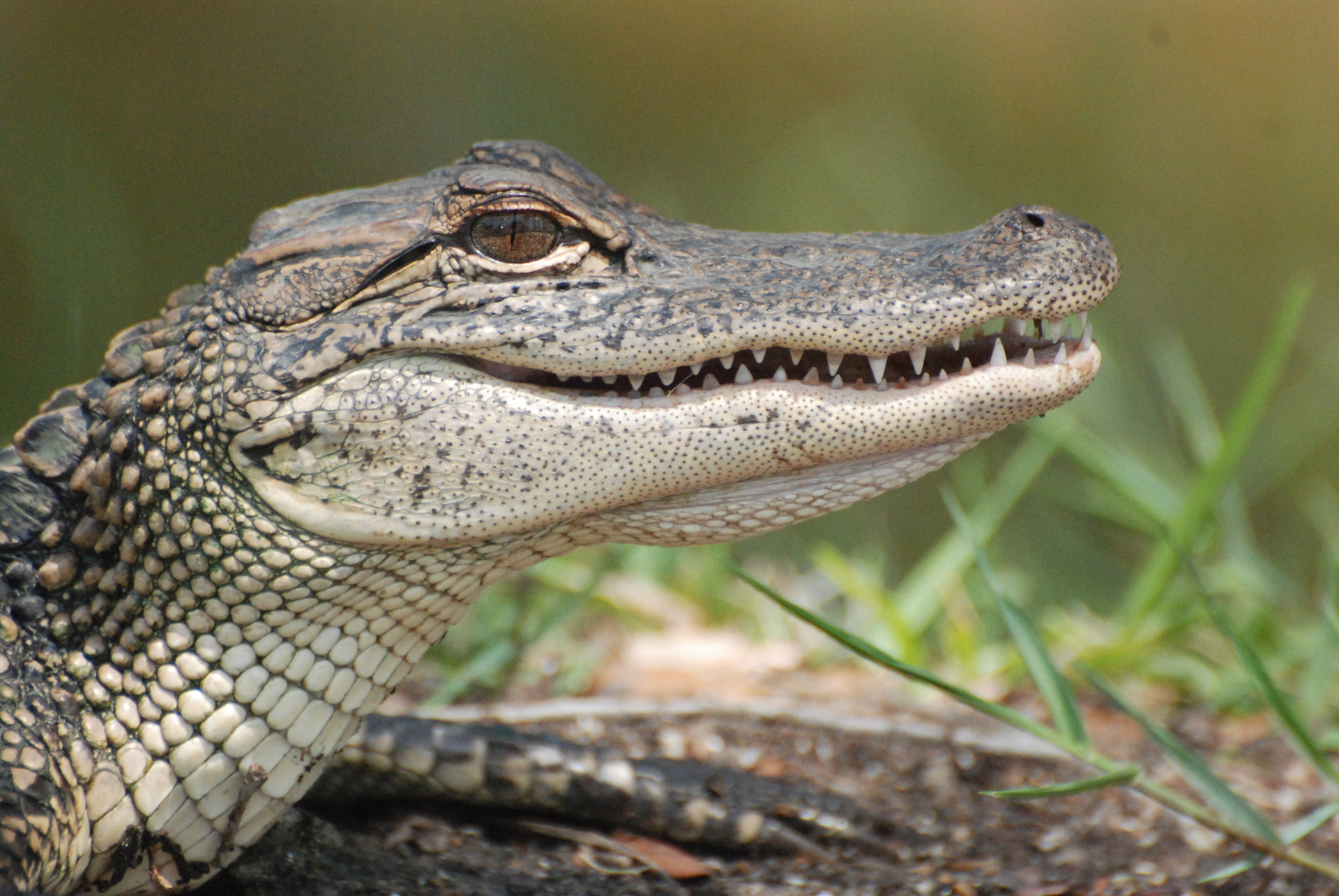Alligator Plant Benefits: Uncovering The Surprising Perks Of This Unique Green Friend
Detail Author:
- Name : Patsy Nitzsche
- Username : josh86
- Email : ohamill@runte.org
- Birthdate : 1974-09-10
- Address : 5388 Margaretta Rest Apt. 997 Murphytown, WV 59047-8766
- Phone : 248.853.7798
- Company : Sipes-Kulas
- Job : Command Control Center Specialist
- Bio : Eveniet saepe cum doloribus velit. Error asperiores labore ut expedita a autem. Tempore quo incidunt aut reprehenderit asperiores atque. Incidunt mollitia est quo.
Socials
twitter:
- url : https://twitter.com/hilario1545
- username : hilario1545
- bio : Rerum voluptatem commodi neque. Laboriosam vel voluptas unde esse. Atque eum ut vel quis.
- followers : 6698
- following : 1664
facebook:
- url : https://facebook.com/koepp2019
- username : koepp2019
- bio : Et dicta eligendi sed quis eos. Ducimus hic atque pariatur et quibusdam.
- followers : 5263
- following : 844
linkedin:
- url : https://linkedin.com/in/hkoepp
- username : hkoepp
- bio : Aliquid sed est non et ad quia blanditiis.
- followers : 2559
- following : 60
A doctor that I work with swears up and down that he saw the biggest alligator of his life near Maumelle, Arkansas. That kind of story, you know, really gets people talking. When we hear the word "alligator," our minds often jump to those impressive, scaly reptiles, doesn't it? Yet, there's a whole different kind of "alligator" that might just be a fantastic addition to your living space, offering a surprising array of advantages.
This particular green companion, often known as the alligator plant, or sometimes called Mother of Thousands, is truly a sight to behold. It's got a unique look that, for some, vaguely resembles an alligator's jaw, especially with its distinctive leaf edges. But its charm goes far beyond just its intriguing appearance.
Today, we're going to explore the many delightful alligator plant benefits that make this succulent a popular choice for plant lovers everywhere. We'll look at why so many people are drawn to it, from its simple care requirements to its more intriguing characteristics, and how it might just brighten up your everyday surroundings.
Table of Contents
- What Exactly is the Alligator Plant?
- The Many Benefits of Alligator Plants
- Caring for Your Alligator Plant
- Common Questions About Alligator Plants
- Making the Most of Your Alligator Plant
What Exactly is the Alligator Plant?
The alligator plant, scientifically known as Kalanchoe daigremontiana, is a succulent native to Madagascar. It's a rather fascinating plant, really, known for its thick, fleshy leaves that often have a grayish-green color with some darker spots or patterns. These patterns can sometimes remind people of alligator skin, which is probably where its common name comes from.
What makes this plant particularly special, and quite distinctive, are the tiny plantlets that form along the edges of its leaves. These little "babies" are miniature versions of the parent plant, complete with their own roots, and they drop off easily to start new plants. This amazing ability is why it also goes by the charming nickname "Mother of Thousands," which, you know, perfectly describes its prolific nature.
It's a plant that thrives in warmer climates outdoors, but it's also very popular as an indoor houseplant in many places, even where central Arkansas is about the northern edge for actual alligators. This adaptability is just one of the things that makes it such a sought-after green addition to homes and offices. It certainly offers a unique visual appeal that sets it apart from many other common houseplants.
The Many Benefits of Alligator Plants
When you consider adding a new plant to your collection, you're probably thinking about more than just its looks. The alligator plant brings quite a few practical and aesthetic advantages to the table. These benefits range from making your life a bit easier to possibly even adding a touch of natural wellness to your daily routine, so it's almost a complete package.
Easy Care for Busy Lives
One of the biggest alligator plant benefits, and a truly appealing one for many people, is its remarkable ease of care. This plant is a succulent, which means it's built to store water in its leaves and stems, making it quite forgiving if you forget to water it now and then. It's a very good choice for beginners or anyone with a busy schedule, basically.
You don't need to be a seasoned gardener to help this plant thrive. It's not too picky about its growing conditions, as long as it gets enough light and isn't overwatered. This low-maintenance quality means you can enjoy its unique beauty without constant fuss or worry, which is pretty great, honestly.
For those who might feel like they have a "black thumb," this plant can be a real confidence booster. It tends to be quite resilient and will often bounce back even if it experiences a bit of neglect. So, if you're looking for a green companion that won't demand too much of your time, this one might be just what you need.
A Natural Air Purifier, in a way
Like many plants, the alligator plant contributes to a healthier indoor environment. Plants naturally help to improve air quality by absorbing carbon dioxide and releasing oxygen during photosynthesis. This process can make your living space feel a bit fresher and more inviting, you know.
While specific studies on the alligator plant's air-purifying capabilities might not be as widely publicized as some other plants, the general principle holds true. Having more green life indoors can help filter out some common indoor pollutants, which is certainly a nice bonus. It's a simple, natural way to potentially enhance the air you breathe every day.
So, by simply having this plant around, you're not just adding beauty; you're also inviting a small, quiet air cleaner into your home. It's a subtle benefit, perhaps, but one that contributes to a more pleasant atmosphere. And, really, who wouldn't want a little extra fresh air floating around?
Traditional Wellness Uses, apparently
Interestingly, some cultures have traditionally used Kalanchoe species, including the alligator plant, for various wellness purposes. These uses often involve applying the plant's juices or crushed leaves to aid in certain discomforts. It's a practice rooted in folk medicine, apparently, passed down through generations.
For example, some people have reportedly used it topically for skin irritations or minor scrapes. It's important to remember, however, that these are traditional uses and not medically proven remedies. Just like that doctor I mentioned earlier swears up and down about seeing a huge alligator, some folks truly believe in these plant applications.
Always exercise caution and consult with a healthcare professional before using any plant for medicinal purposes. While the stories are fascinating, safety always comes first. This plant's traditional role, however, adds another layer of intrigue to its already unique profile, making it more than just a pretty face.
A Plant That Keeps on Giving: Propagation
One of the most exciting alligator plant benefits, especially for those who love to share their green passion, is its incredible ease of propagation. Those tiny plantlets that form along the leaf edges are essentially ready-made new plants. They just fall off and, with a little encouragement, will root themselves in nearby soil.
This means you can easily grow an entire collection of alligator plants from just one parent plant. It's a very rewarding experience to watch these little babies grow into full-sized plants. You can share them with friends, use them to decorate other rooms, or even, you know, start a small plant exchange with your neighbors.
It's an almost effortless way to expand your plant family without needing to buy new plants constantly. This ability to multiply so readily makes it a favorite among plant enthusiasts and a great way to introduce newcomers to the joys of gardening. It's pretty much a gift that keeps on giving, honestly.
Adding a Touch of Green Beauty
Beyond all its practical advantages, the alligator plant simply adds a unique and striking visual element to any space. Its distinct leaf shape and the way the plantlets dangle from the edges create a truly interesting texture and form. It's not your typical leafy green, which is kind of cool.
Whether placed on a sunny windowsill, a desk, or as part of a larger plant arrangement, it draws the eye and sparks conversation. Its unusual appearance can serve as a natural focal point, bringing a touch of the exotic indoors. It's a plant that definitely stands out in a crowd, basically.
For those who appreciate plants that are a little out of the ordinary, the alligator plant is a perfect choice. It offers a subtle yet impactful way to introduce more natural beauty into your home or office. Its presence can make a room feel more alive and connected to the natural world, which is a rather nice feeling.
Caring for Your Alligator Plant
While the alligator plant is known for being easy to care for, giving it the right conditions will help it truly flourish. Just like any living thing, it has its preferences, and understanding them means a happier, healthier plant for you. Getting these basics right will make all the difference, you know.
Light Needs, you know
The alligator plant loves bright light. It really thrives when it gets plenty of sunshine, so a south-facing window is often an ideal spot for it indoors. If it doesn't get enough light, its growth might become a bit leggy, and its vibrant colors might fade. More light generally means a more compact and robust plant, basically.
However, too much direct, intense sun, especially during the hottest parts of the day, can sometimes scorch its leaves. A balance is key: bright, indirect light or a few hours of direct morning sun is usually perfect. You'll notice the plant's response, so adjust its spot if it seems unhappy, which is pretty straightforward.
If you're keeping it outdoors in a warm climate, pick a spot where it gets plenty of sun but perhaps a little afternoon shade during peak heat. This attention to its light preferences will ensure it stays healthy and continues to produce those charming plantlets. It's a simple step that yields great results.
Watering Habits, basically
As a succulent, the alligator plant is very susceptible to overwatering. This is probably the most common mistake people make with it. It's much better to underwater this plant than to give it too much water, honestly, as soggy roots can lead to rot very quickly.
Allow the soil to dry out completely between waterings. You can check by sticking your finger about an inch or two into the soil; if it feels dry, then it's probably time for a drink. When you do water, give it a good soak until water drains from the bottom of the pot, then let it drain thoroughly.
During the cooler months, the plant will need even less water, as its growth slows down. Always remember that succulents prefer a "drought and deluge" approach rather than frequent, small sips of water. This watering method helps mimic its natural environment and keeps its roots healthy, which is a very important part of its care.
Soil and Potting, honestly
The right soil mix is crucial for the alligator plant's well-being. It needs a well-draining soil that won't hold onto too much moisture. A standard succulent or cactus potting mix is usually perfect for this plant, basically, as these mixes are designed for fast drainage.
You can also create your own mix by combining regular potting soil with perlite or coarse sand to improve drainage. This helps prevent water from sitting around the roots, which is vital for preventing root rot. A good pot with drainage holes is also non-negotiable, you know.
When it comes to repotting, these plants don't mind being a little bit root-bound, so you won't need to repot them very often. Just move it to a slightly larger pot when you see roots growing out of the drainage holes or if the plant seems to be struggling. It's a pretty low-stress process, honestly.
Temperature and Humidity, sort of
The alligator plant prefers average room temperatures, generally between 65°F and 75°F (18°C-24°C). It's not a fan of cold drafts or temperatures below 50°F (10°C), which can cause damage. So, keeping it away from chilly windows in winter is a good idea, as a matter of fact.
As for humidity, this plant is quite adaptable and doesn't require high levels. In fact, it prefers drier air, which is typical for succulents. This makes it a great choice for most indoor environments, as you don't need to worry about special humidifiers or misting, which is kind of convenient.
It's generally happy in the same conditions that are comfortable for people. Just avoid extreme temperature fluctuations, and your alligator plant should thrive. This makes it a very straightforward plant to integrate into most homes, without needing much special environmental adjustment.
Common Questions About Alligator Plants
People often have a few common questions when they first encounter the alligator plant or consider bringing one home. Here are some of the most frequently asked ones, to help you feel more confident about this interesting succulent.
Is the alligator plant safe for pets?
This is a very important question for pet owners, and the answer is that the alligator plant, like many Kalanchoe species, is considered toxic to pets, including cats and dogs. Ingesting parts of the plant can cause various symptoms, such as vomiting, diarrhea, and in more severe cases, heart problems.
It's best to keep this plant out of reach of curious pets. Placing it on high shelves or in rooms that pets cannot access is a good way to ensure their safety. If you suspect your pet has eaten any part of the plant, it's really important to contact your veterinarian right away, you know.
While beautiful, its potential harm to furry friends is something to be very aware of. So, enjoy its unique look, but do so responsibly, keeping your beloved animals safe and sound. It's a small precaution that makes a big difference, basically.
How fast does an alligator plant grow?
The alligator plant generally has a moderate to fast growth rate, especially when it's provided with optimal conditions like plenty of sunlight and appropriate watering. You'll likely notice it putting on new growth fairly consistently, which is pretty satisfying to watch.
The most noticeable sign of its growth is the continuous production of those tiny plantlets along the leaf margins. These little "babies" appear quite quickly once the plant is established. Within a year or two, a small plant can become a sizable specimen, producing many offspring.
Its growth can also be influenced by factors like the size of its pot and the nutrients in its soil. If it seems to be growing slowly, check its light exposure and make sure it's not overwatered. With the right care, you'll see it flourish and expand its family rather quickly.
learn more about plant care on our site, or even check out reliable gardening resources online. It's a plant to admire, not to consume, essentially.
Making the Most of Your Alligator Plant
Bringing an alligator plant into your home can truly be a rewarding experience. Its unique appearance, combined with its easy-going nature, makes it a wonderful choice for almost any plant enthusiast, from beginners to seasoned green thumbs. It really adds a distinctive touch to any room, and its ability to create new little plants is just endlessly fascinating.
So, why not consider adding this intriguing succulent to your indoor garden? It's a conversation starter, a source of new plant babies to share, and a pretty resilient companion. You might find yourself, like many others, completely charmed by its unique qualities. For more detailed tips on keeping your plants happy and healthy, you can always visit our comprehensive plant care guide.


